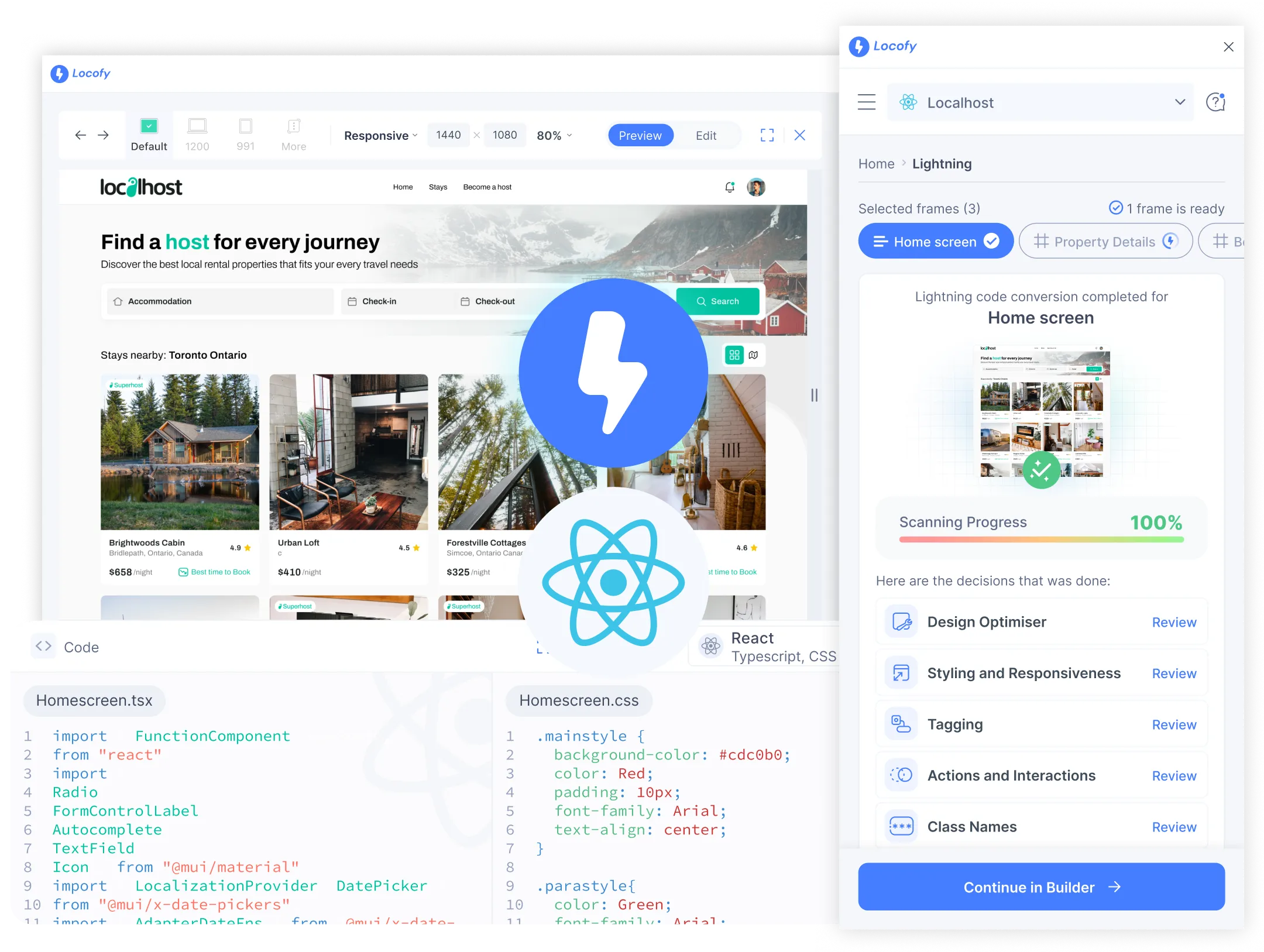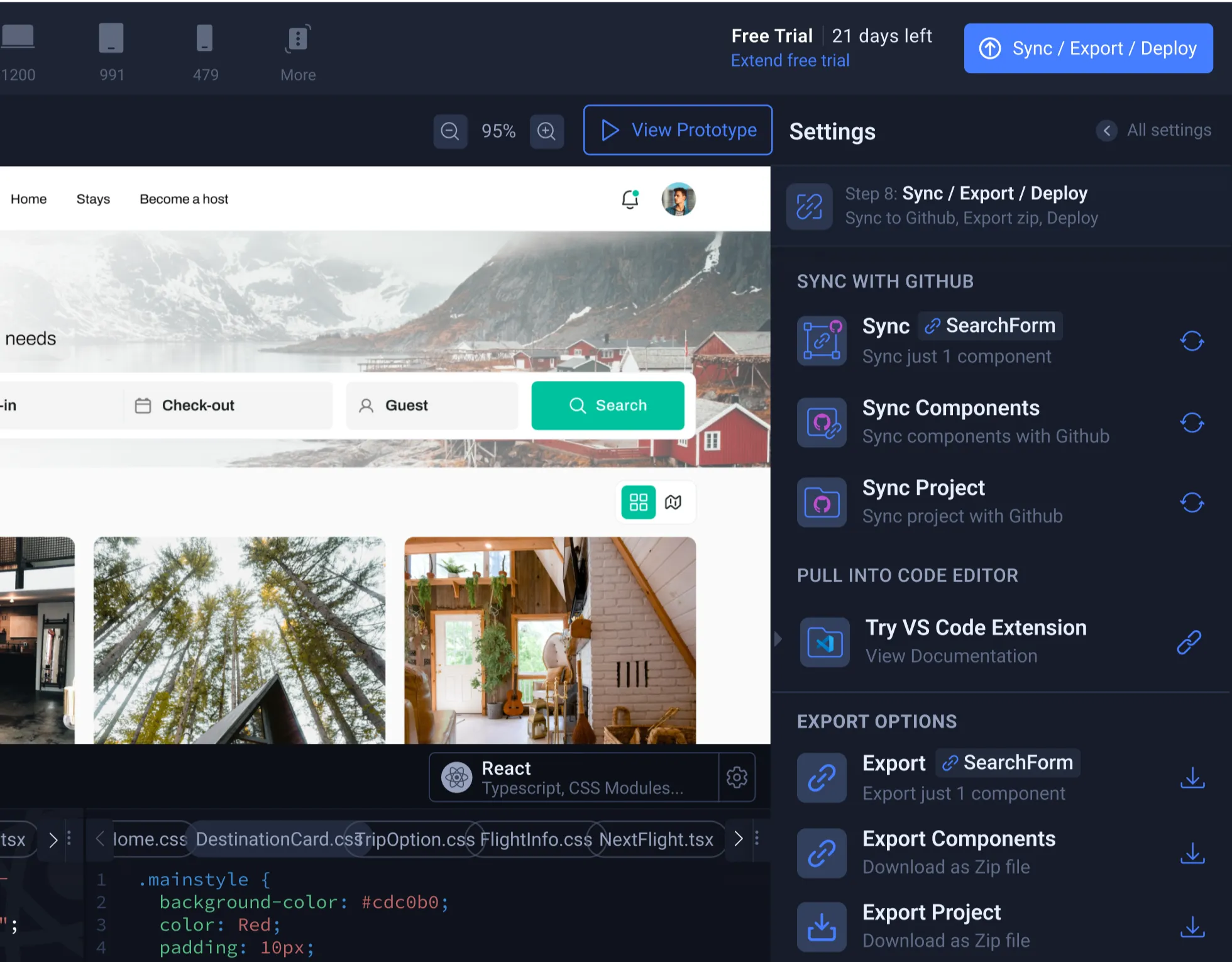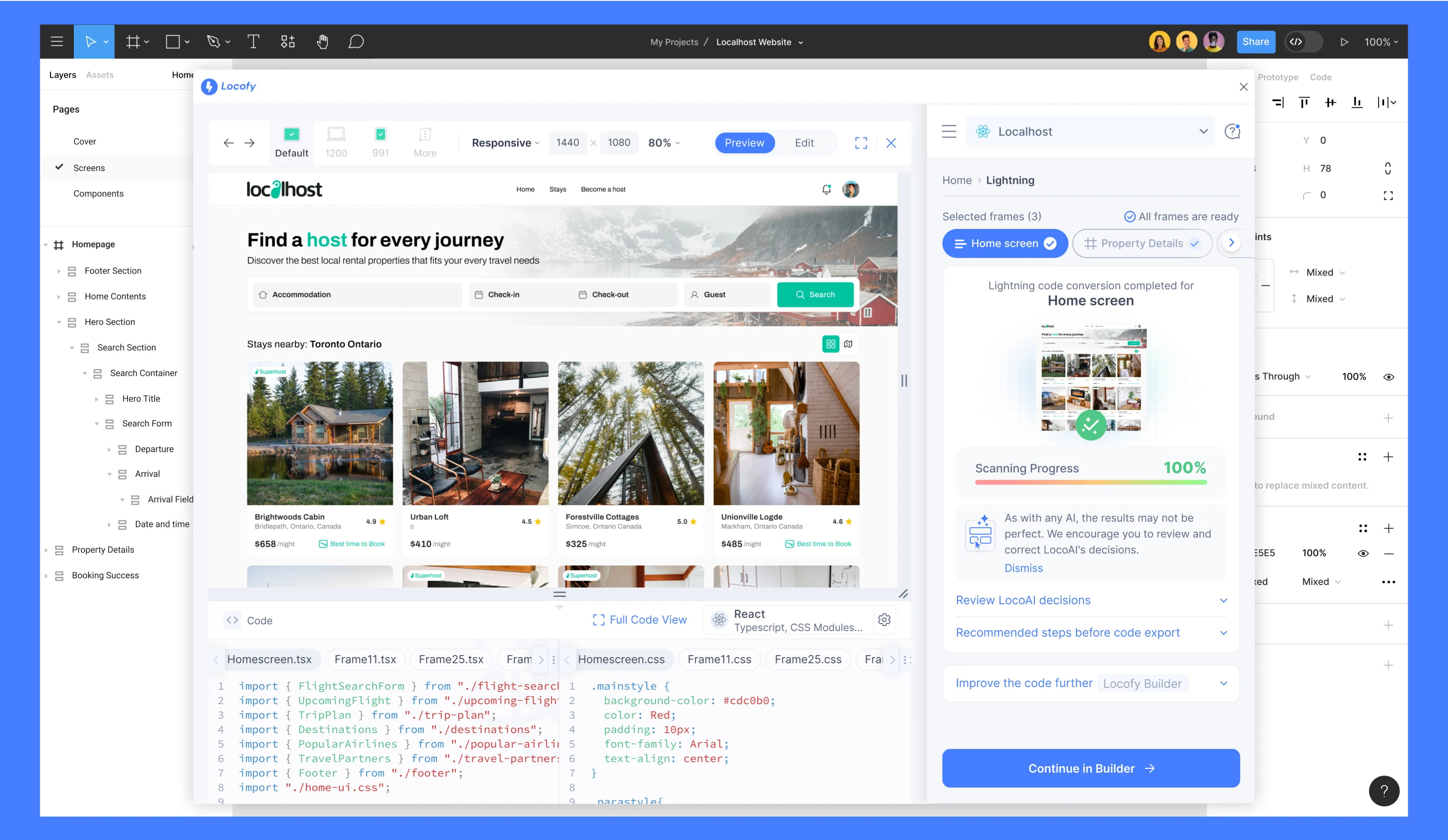
Figma to ReactLocofy
Locofy converts Figma designs into responsive, component-based React code using AI. It enables real-time previews, reusable components, and dynamic interactions, helping teams accelerate development, reduce manual coding, and maintain design fidelity across devices.
Vendor
Locofy
Company Website



Product details
Figma to React
Locofy’s Figma to React tool uses AI to convert static Figma designs into responsive, component-based React code. It empowers teams to build high-quality web applications faster by automating frontend development and generating live, interactive prototypes backed by real code
Features
- LocoAI Engine: Converts static layers into interactive elements like buttons, inputs, and forms, and applies responsive styling across breakpoints.
- Live Prototypes: Instantly preview working React prototypes rendered with actual code.
- Reusable Components: Automatically generates modular React components with props, reducing redundancy and improving scalability.
- UI Library Support: Integrates with Material UI, Bootstrap, Ant Design, Chakra UI, and Tailwind CSS.
- Custom Component Mapping: Imports and maps custom components via CLI, GitHub, or Storybook.
- GitHub Sync: Smart code merge keeps designs and code in sync with version control.
- Dev Mode Compatibility: Fully integrated with Figma’s Dev Mode for seamless workflows.
Capabilities
- Design Optimization: Cleans up design structure, groups layers, and applies layout constraints for better code output.
- Interactive Behavior Mapping: Converts Figma prototype actions into functional React interactions (e.g., hover, onClick, pressed states).
- Dynamic Data Binding: Enables integration with backend APIs and data sources for dynamic content.
- Parallel Workflows: Designers and developers can work simultaneously with minimal friction.
- Deployment Options: Export React code and deploy via Netlify, GitHub Pages, or Vercel.
Benefits
- Accelerated Development: Reduces frontend development time by up to 80%.
- Pixel-Perfect Output: Ensures high-fidelity code that matches the original design.
- Improved Collaboration: Enhances communication between design and engineering teams.
- Scalable Codebase: Modular architecture supports long-term maintainability.
- Seamless Handoff: Eliminates manual translation of designs into code.